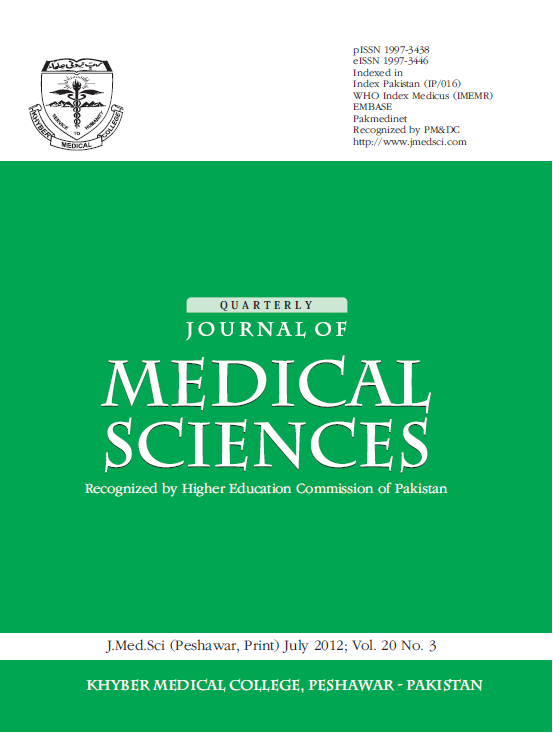CORRELATION BETWEEN PREOPERATIVE COMPUTED TOMOGRAPHY AND POSTOPERATIVE PATHOLOGICAL MEASUREMENTS OF TUMOR LENGTH IN CASES OF CARCINOMA ESOPHAGUS
Keywords:
Computed tomography, esophageal cancer, tumor lengthAbstract
Objective: To compare the result of preoperative computed tomography (CT) and postoperative pathological
measurements of tumor length in cases of carcinoma esophagus.
Material and Methods: Computed tomography thorax and upper abdomen with oral and intravenous contrast was
done of biopsy proven 100 cases of carcinoma esophagus. The patients were then referred to Cardiothoracic
Surgery Unit, PGMI, Lady Reading Hospital for esophagectomy. Tumor lengths measured on preoperative computed
tomography and on the post-operative resection specimens were recorded.
Results: Out of 100 patients, 65 were male and 35 were female. Age ranged from 18 to 82 years with a mean age of
59.9 years. Middle and lower third tumors were present in 50 cases each. On CT scan the esophageal tumor length
ranged from 1 cm to 13 cm with a mean length of 4.96 cm, whereas pathological measurements of esophageal tumor
length ranged from 1cm to 12 cm with a mean length of 4.72 cm. There was a significant linear correlation between
CT and pathology measurements of esophageal tumor lengths.
Conclusion: CT assessments generally overestimate macroscopic esophageal tumor length and should not be the
only modality used for management decisions.
Downloads
Published
How to Cite
Issue
Section
License
All articles published in the Journal of Medical Sciences (JMS) are licensed under the Creative Commons Attribution 4.0 International License (CC-BY 4.0). Under the CC BY 4.0 license, author(s) retain the ownership of the copyright publishing rights without restrictions for their content, and allow others to copy, use, print, share, modify, and distribute the content of the article even for commercial purposes as long as the original authors and the journal are properly cited. No permission is required from the author/s or the publishers for this purpose. Appropriate attribution can be provided by simply citing the original article. The corresponding author has the right to grant on behalf of all authors, a worldwide license to JMS and its licensees in all forms, formats, and media (whether known now or created in the future), The corresponding author must certify and warrant the authorship and proprietorship and should declare that he/she has not granted or assigned any of the article’s rights to any other person or body.
The corresponding author must compensate the journal for any costs, expenses, or damages that the JMS may incur as a result of any breach of these warranties including any intentional or unintentional errors, omissions, copyright issues, or plagiarism. The editorial office must be notified upon submission if an article contains materials like text, pictures, tables, or graphs from other copyrighted sources. The JMS reserves the right to remove any images, figures, tables, or other content, from any article, whether before or after publication, if concerns are raised about copyright, license, or permissions and the authors are unable to provide documentation confirming that appropriate permissions were obtained for publication of the content in question.




